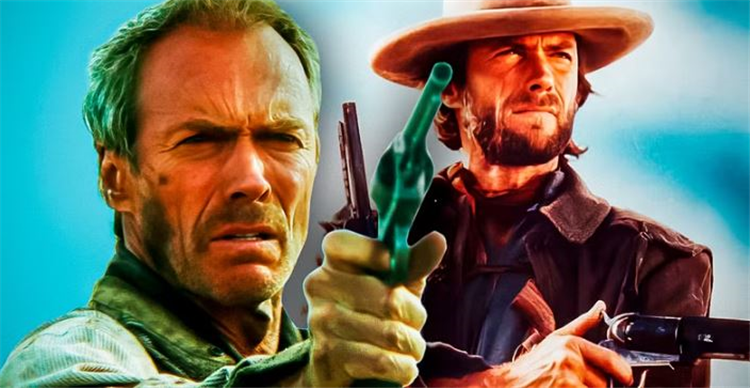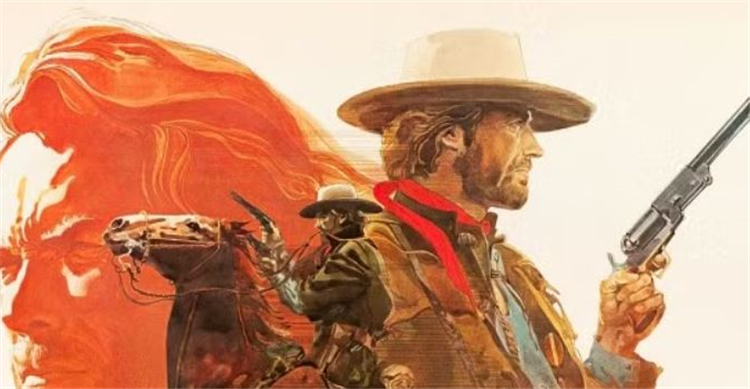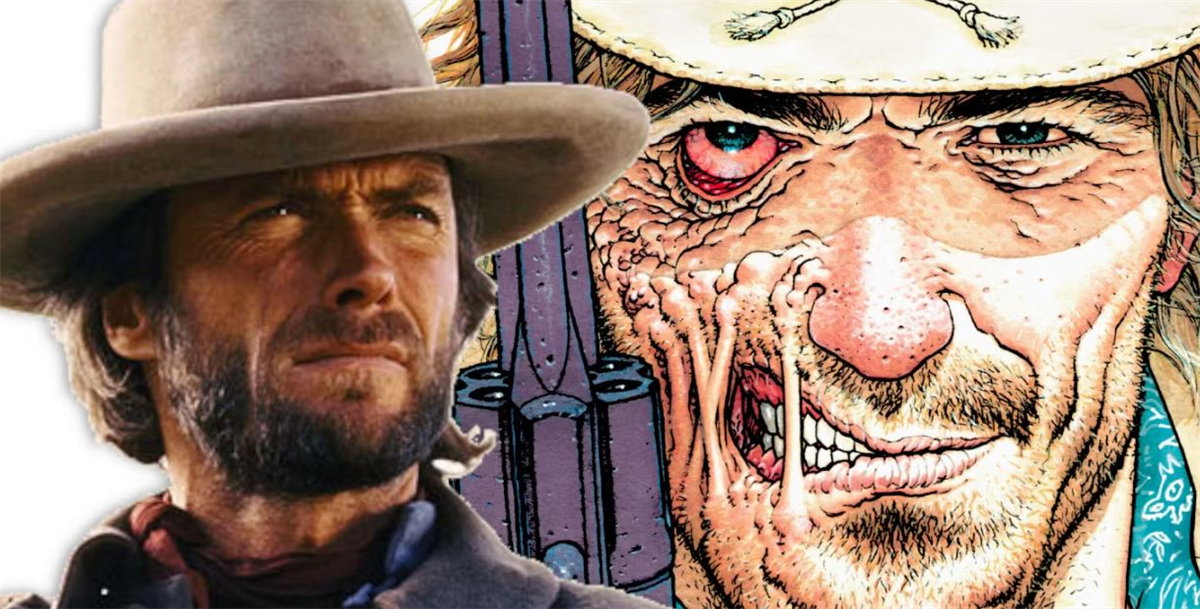According to several sources, Clint Eastwood almost played Jonah Hex in a movie based on DC Comics’ popular western hero. Eastwood has frequently been fan-cast as DC’s scarred bounty hunter, so it will come as a shock to many that the world-famous star may have come close to playing Jonah Hex not long after the outlaw made his comics debut.
A veteran of the Civil War with a mean streak, Jonah Hex immediately stood out from the clean-cut Western heroes seen in comics prior to his 1972 debut. He didn’t shoot the guns out of the bad guys’ hands, and sometimes didn’t even wait for them to pull their guns before blowing them away.
Hex has periodically shown up in the DCU in some form or another ever since, including a 2010 film. Yet the plans for a Jonah Hex film stretch back to the 1970s, and may have involved the Hollywood superstar who inspired his creation.
Western Icon Clint Eastwood Was The Original Inspiration For DC’s Jonah Hex
First Appearance: All-Star Western #10 – Created By John Albano And Tony DeZuniga
Created by John Albano and Tony DeZuniga, Jonah Hex first appeared in All-Star Western #10. The bounty hunter made quite an impression, as All-Star was renamed Weird Western Tales two issues later, and Jonah Hex quickly became the title’s main star. Author Susan Hillwig, who runs the rather definitive “An Illustrated History of Jonah Hex” series on her blog, describes Hex’s sudden rise to popularity:
“ You gotta understand, Jonah became very popular in a very short period of time. The character was originally given a 5-issue stint, and when they saw the sales figures, they had to scramble to get Albano & DeZuniga to do more. ”
Though the Hex character’s popularity was, in a sense, unexpected, it was also an extension of ideas frequently encountered in popular culture at that time.
Creators John Albano and Tony DeZuniga always noted how they wanted to make a grittier, more realistic western hero, in the fashion of Clint Eastwood in the spaghetti westerns of the 60s. When describing how the character came about in 2005’s Back Issue #12, Tony DeZuniga describes the rugged approach to the character, saying, “The cowboys dressed really rugged — I would say filthy and dirty — and I liked doing it that way.” Readers liked it, as well, and it wasn’t long before Jonah Hex was spun off into his own, self-titled series in 1977.
Jonah Hex fans picked up on the Eastwood connection right away, with many writing in to note the similarities to the actor’s earlier spaghetti westerns. It eventually became a popular topic in the letters columns of both Weird Western Tales and Jonah Hex, as readers wrote in to DC expressing their desire to see Clint Eastwood take on the role. Little did these fans know that Eastwood (and his production company Malpaso) was allegedly already working behind the scenes to bring Jonah Hex onto the big screen not long after the character made his debut.
How Close Did Clint Eastwood Really Come To Playing DC’s Scarred Bounty Hunter Jonah Hex?
Hex’s Creator’s Grandson Explains

John Albano, one of Jonah Hex’s original creators, infamously stopped writing the strip with Weird Western Tales #21. While the reason of his sudden departure was not explained at the time, it was later revealed that Albano soon came into conflict with DC over the Jonah Hex character. “I do not know all of the details,” says Jared Vian, the grandson of John Albano, “but I do know that my grandfather took DC to court over rights or royalties to Jonah Hex.”
The reason for this sudden court action by Albano? According to Vian, it arose when discussions began over a potential Jonah Hex movie between Clint Eastwood’s Malpaso Productions and Warner Bros./DC:
“ I also know that, at one time, a movie was discussed with Clint Eastwood. When I was a teenager, I remember seeing papers in my grandfather’s house discussing the possibility of a movie. ”
Whatever the case, Albano was taken off his signature character as a result. A 2005 obituary for John Albano written by Mark Evanier states that a “lawsuit was settled with Albano receiving money,” but the writer was ostracized by DC, as a result. The planned Jonah Hex film never came to pass, either, though whether this was also an unfortunate byproduct of the lawsuit is unknown.
It’s important to note that comic book characters had rarely been pursued by Hollywood in any serious capacity during this era of film history. “Up until the 1990s, the interest [in Warner Bros. adapting DC Comics] was very limited,” says Paul Levitz, a long-time DC executive who served as the president of DC Comics from 2002-2009. Levitz was unsure of Warners ever pursuing a Jonah Hex adaptation in the seventies, saying:
“ I don’t recall hearing about the movie discussions, but I wouldn’t necessarily have heard them in my role then. ”
Levitz was also unsure of any lawsuit Albano may have filed against DC:
“ He might have threatened, or had a lawyer push DC to a more reasonable deal than his original terms…which would have been the standard awful deal of the time. ”
In other words, evidence of Eastwood’s involvement in a Jonah Hex adaptation remains anecdotal.
The Outlaw Jonah Hex – How Clint Eastwood’s Career Reflected DC’s Cowboy Character
Exploring The Parallels Between The Outlaw Josey Wales & Jonah Hex
Although the proposed Jonah Hex movie never got off the ground, the character continued to appear month-in and month-out at DC Comics, in a time when western heroes were struggling to survive in the four-color world. Westerns also began falling out of fashion in Hollywood, although a few mainstays kept the genre on life-support. Clint Eastwood would direct and star in both High Plains Drifter and The Outlaw Josey Wales during this decade, both portrayed the darker, gritty tone of the genre seen in Weird Western Tales and Jonah Hex.
In fact, if one wild rumor is to be believed, The Outlaw Josey Wales may have taken inspiration from none other than Jonah Hex himself. Based on the novel Gone to Texas (aka The Rebel Outlaw: Josey Wales) by the controversial Asa/Forrest Carter, Eastwood’s 1976 film told the story of a Missouri farmer whose family is murdered in the American Civil War, and proceeds to become a legendary gunfighter on his trail of revenge. Some rumors point to Eastwood and Malpaso shifting focus to The Outlaw Josey Wales once the Jonah Hex deal fell through.
Susan Hillwig explains how Hex may have inspired Eastwood’s adaptation of Josey Wales, although she is quick to point out this is all rumor/speculation:
“ Now we dive back into ‘rumor’ territory…If it is true, though, that may explain why the vertical scar Eastwood bears in the movie resembles a simplified version of Hex’s, more than the one Josey Wales is described as having in the book (i.e. a horizontal slash across his cheek caused by a bullet). There’s also the fact that the betrayal and slaughter of Wales’ regiment once they surrender (which doesn’t occur in the book) bears similarities to Fleisher’s description of the Fort Charlotte Massacre, which was first described in Weird Western Tales #29, a year before the movie came out. ”
While unconfirmed, Hillwig’s examples certainly paint a compelling picture of how Jonah Hex may have inspired The Outlaw Josey Wales in some way. It could all be boiled down to little more than wishful thinking or mere coincidence, but it makes for fascinating speculation, nonetheless, as it hints at a possible “divergent timeline” where comic book adaptations became standard in Hollywood decades earlier than they actually did.
The Fan Campaign To Get Clint Eastwood The Jonah Hex Role, Explained

While Clint Eastwood’s alleged Jonah Hex adaptation never got off the ground, the story doesn’t end there. Fans were still adamant about the actor taking on the role in “Via Pony Express,” the letters column of the monthly Jonah Hex series. The column for 1981’s Jonah Hex #57 contains a letter from Mike Sopp, who went so far as to get the address to Malpaso’s production offices. Sopp writes in his letter:
“ I am suggesting that, as soon as everyone finishes reading this letter, they send any issue of Jonah Hex that they can lay their hands on .”
Subsequent issues contain letters from fans saying they had sent their old back issues to Malpaso, so the fan campaign was in full effect.
While the image of the Malpaso offices being flooded with Jonah Hex comics is quite amusing, this letter-writing campaign never amounted to anything. It is interesting to note that Eastwood would return to the genre four years after Mike Sopp’s letter campaign, with the release of 1985’s Pale Rider, the actor/director’s first true-blue western since The Outlaw Josey Wales. A supernatural Western that feels like it would be very much at home in Weird Western Tales, Pale Rider featured the iconic actor as the Preacher, a ghostly gunslinger who helps a group of independent prospectors fight off a mining baron.
Interestingly enough, 1985 was also the year the Jonah Hex ongoing series was canceled by DC. The gunslinger was sent to a post-apocalyptic future in the relaunched Hex series, which would run for eighteen issues before it too was canceled in 1987. Yet where other comic book western heroes fell into obscurity, Jonah Hex remained in the public consciousness, continuing to appear in DC Comics like the various Vertigo miniseries produced by Joe Lansdale and Tim Truman, and another long-running series in the 2000’s written by Jimmy Palmiotti and Justin Gray.
Jonah Hex Remains DC’s Most Iconic Western Hero
Clint Eastwood’s Epic Comic Book Movie “What-If?”
After several false starts, the character would eventually make it to the big screen in 2010’s Jonah Hex, where he was portrayed by actor Josh Brolin. Although the results left much to be desired, the fact that the character was deemed worthy enough to carry his own feature film further solidifies the western outlaw’s prominence within comic book history. Whether or not Clint Eastwood once attempted to make a film of DC Comics anti-hero Jonah Hex, the two will always share a legacy due to their drastic reinvention of the western genre.
